Author Biographies 11
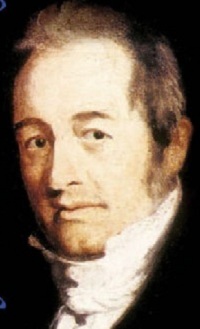 John Galt
John Galt
1779-1839
John Galt (May 2, 1779-April 11, 1839) was a Scottish novelist. Born in Irvine, North Ayrshire, Scotland, Galt was the son of a naval captain. When his family relocated to Malden in 1789, Galt became an apprentice and junior clerk, writing essays and stories for local journals in his spare time. He moved to London in 1804 to seek his fortune. In 1809, Galt began studying law at Lincoln’s Inn.
While subsequently traveling in Europe, Galt met and befriended Lord Byron. On his return to London, Galt wrote an account of his travels, which met with moderate success. Decades later, he would also publish the first full biography of Lord Byron. He also published the first biography of the painter Benjamin West, The Life and Studies of Benjamin West (1816, expanded 1820).
In 1813, Galt attempted to establish a Gibraltarian trading company in order to circumvent Napoleon’s embargo on British trade; however, Wellington’s victory in Spain made this no longer necessary. Galt then returned to London and married Elizabeth Tilloch. In 1815, he became Secretary of the Royal Caledonian Asylum in London. He also privately consulted in several business ventures.
Concentrating on his writing for the next several years, Galt lived at times in London, Glasgow, Edinburgh and elsewhere. In addition to fiction, he also wrote a number of school texts under the pseudonym Reverend T. Clark.
In 1824, Galt was appointed Secretary to the Canada Company, a charter company established to aid in the colonization of Upper Canada. During his tenure with the Canada Company, Galt ran afoul of several colonial authorities, including Sir Peregrine Maitland, who was Lieutenant-Governor of Upper Canada at the time. He was heavily criticized by his employers for his lack of basic accounting skills and failure to carry out their established policies. This resulted in his dismissal and recall to Great Britain in 1829.
Soon after his return to England, he was imprisoned for several months for failure to pay his debts. One of Galt’s last novels, The Member, has political corruption as its central theme.
Despite failing health, Galt was involved in another colonial business venture, the British American Land Company, which was formed to develop lands in the Eastern Townships of Lower Canada. Galt served as secretary but was forced to resign in December 1832 because of his health.
He retired to Greenock in Scotland, publishing his two-volume Autobiography in 1833.
Source: http://en.wikipedia.org/wiki/John_Galt_%28novelist%29
 Bibliography
Bibliography
Press your browser’s BACK button to return to the previous page.
 John Gardner
John Gardner
1933-1982
John Champlin Gardner Jr. (July 21, 1933-September 14, 1982) was an American novelist, essayist, literary critic and university professor.
Gardner was born in Batavia, New York. His father was a lay preacher and dairy farmer, and his mother taught English at a local school. As a child, Gardner attended public school and worked on his father’s farm. Gardner received his undergraduate degree from Washington University in St. Louis in 1955. He received his M.A. & Ph.D in 1958 from the University of Iowa. He was Distinguished Visiting Professor at the University of Detroit in 1970 or 1971.
Gardner’s best-known novels include: The Sunlight Dialogues; Grendel; and October Light. This last novel won the National Book Critics Circle Award in 1976.
Gardner was a lifelong teacher of fiction writing. He was a favorite at the Bread Loaf Writers’ Conference. His two books on the craft of writing fiction – The Art of Fiction and On Becoming a Novelist – are considered classics. In 1978, Gardner’s book of literary criticism, On Moral Fiction, sparked a controversy that excited the mainstream media. In 1977, Gardner published The Life and Times of Chaucer.
Gardner was killed in a motorcycle accident about two miles from his home in Susquehanna County on September 14, 1982.
Source: http://en.wikipedia.org/wiki/John_Gardner_%28American_writer%29
 Bibliography
Bibliography
Press your browser’s BACK button to return to the previous page.
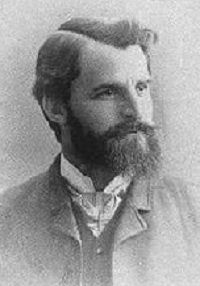 Hamlin Garland
Hamlin Garland
1860-1940
Hannibal Hamlin Garland (September 14, 1860-March 4, 1940) was an American novelist, poet, essayist and short story writer. He is best known for his fiction involving hard-working Midwestern farmers.
Garland was born on a farm near West Salem, Wisconsin, on September 14, 1860, the second of four children of Richard Garlin of Maine and Charlotte Isabelle McClintock. The boy was named after Hannibal Hamlin, then candidate for vice president under Abraham Lincoln. He lived on various Midwestern farms throughout his young life but settled in Boston, Massachusetts, in 1884 to pursue a career in writing. He read diligently in the public library there. His first success came in 1891 with Main-Traveled Roads, a collection of short stories inspired by his days on the farm. He serialized a biography of Ulysses S. Grant in McClure’s Magazine before publishing it as a book in 1898. The same year, Garland traveled to the Yukon to witness the Klondike Gold Rush, which inspired The Trail of the Gold Seekers (1899). He lived on a farm between Osage and St. Ansgar, Iowa, for quite some time. Many of his writings are based on this era of his life.
A prolific writer, Garland continued to publish novels, short fiction and essays. In 1917, he published his autobiography, A Son of the Middle Border. The book’s success prompted a sequel, A Daughter of the Middle Border, for which Garland won the 1922 Pulitzer Prize for Biography. After two more volumes, Garland began a second series of memoirs based on his diary. Garland naturally became quite well known during his lifetime and had many friends in literary circles. He was made a member of the American Academy of Arts and Letters in 1918.
After moving to Hollywood, California, in 1929, he devoted his remaining years to investigating psychic phenomena, an enthusiasm he first undertook in 1891. In his final book, The Mystery of the Buried Crosses (1939), he tried to defend such phenomena and prove the legitimacy of psychic mediums.
Garland died at age 79, at his home in Hollywood, on March 4, 1940.
Source: http://en.wikipedia.org/wiki/Hamlin_Garland
 Bibliography
Bibliography
Press your browser’s BACK button to return to the previous page.
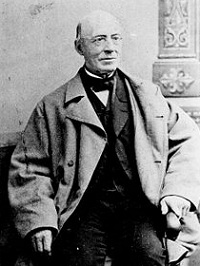 William Lloyd Garrison
William Lloyd Garrison
1805-1879
William Lloyd Garrison, a distinguished abolitionist, the acknowledged leader of the advocates of immediate emancipation in the United States, was born at Newburyport, Massachusetts, in 1805. Before he was 20 years old, he had acquired no inconsiderable reputation by the articles he contributed to The Salem Gazette and other newspapers. He became, in 1826, the conductor of a paper of his own, The Free Press, published at Newburyport; it was, however, unsuccessful, and was soon discontinued.
In 1829, he became joint-editor of The Genius of Universal Emancipation, an anti-slavery journal published in Baltimore. On January 1, 1831, Garrison issued in Boston the first number of The Liberator, an anti-slavery paper, with which his fame became indissolubly associated. The unsparing, not to say virulent, denunciation with which Garrison assailed the institution of slavery, and all those voluntarily, however remotely, connected with it, was not long in arousing attention in every part of the country – while it excited in the Southern states the utmost exasperation. Almost every day brought him letters from the South, containing threats of violence and even assassination. At length, the legislature of Georgia went so far as to offer $5,000 to anyone who should arrest and prosecute him to conviction under the laws of that state. Meanwhile, he was repeatedly mobbed at home and his life was more than once in the utmost peril even in Boston. But nothing could turn him from his course.
Subsequently there was some abatement in the tone of The Liberator, but Garrison did not, in a single material point, modify his views in regard to slavery until its abolition was effected in 1865. The early severity of his denunciations, as his friends allege, with some show of reason, was necessary in order to arouse the conscience of the nation from its apathy respecting the wrongs done to the African race. It would be, perhaps, less easy to excuse the unsparing invective with which Garrison so often assailed those friends of emancipation who thought it right to pursue a different course from his own. It is proper to remark that Garrison and his devoted followers always disclaimed any purpose of exciting the slaves to assert their own freedom by force. They professed to rely solely on arguments and “moral suasion,” addressed to the conscience. They were also nonresistants and not only refused to hold any office in the federal republic but were conscientious even against voting for such an office, for they considered this would be an indirect acknowledgement of the rightfulness of a government supported by military power and contaminated by a compromise with slavery.
In 1865, after the total abolition of slavery in the United States, his friends presented him with $30,000 as a memorial of his services. He died in New York, May 24, 1879.
Source: http://www.sacklunch.net/biography/G/WilliamLloydGarrison.html
 Bibliography
Bibliography
Press your browser’s BACK button to return to the previous page.
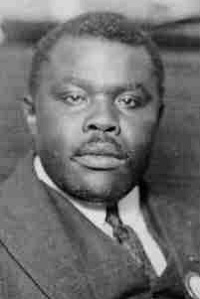 Marcus Garvey
Marcus Garvey
1887-1940
Marcus Mosiah Garvey Jr. (August 17, 1887-June 10, 1940) was a Jamaican publisher, journalist, entrepreneur and orator who was a staunch proponent of the Black Nationalism and Pan-Africanism movements, to which end he founded the Universal Negro Improvement Association and African Communities League (UNIA-ACL).
Prior to the 20th century, leaders such as Prince Hall, Martin Delany, Edward Wilmot Blyden and Henry Highland Garnet advocated the involvement of the African diaspora in African affairs. Garvey was unique in advancing a Pan-African philosophy to inspire a global mass movement and economic empowerment focusing on Africa known as Garveyism. Promoted by the UNIA as a movement of African Redemption, Garveyism would eventually inspire others, ranging from the Nation of Islam to the Rastafari movement (which proclaims Garvey as a prophet). The intent of the movement was for those of African ancestry to “redeem” Africa and for the European colonial powers to leave it.
Garvey was born in St. Ann’s Bay, Jamaica, to Marcus Mosiah Garvey Sr., a mason, and Sarah Jane Richards, a domestic worker. Garvey attended elementary schools in St. Ann’s Bay and the Church of England high school in Jamaica until he was about 14, when he left St. Ann’s Bay for Kingston and found employment as a compositor in the printing house of P.A. Benjamin, Limited. He was a master printer and foreman at Benjamin when, in November 1907, he was elected vice president of the Kingston Union. However, he was fired when he joined a strike by printers in late 1908. Having been blacklisted for his stance in the strike, he later found work at the Government Printing Office. In 1909, his newspaper, The Watchman, began publication, but it only lasted for three issues.
After years of working in the Caribbean, Garvey left Jamaica to live in London from 1912 to 1914, where he attended Birkbeck College, taking classes in Law and Philosophy. He worked for The African Times and Orient Review, published by Duse Mohamed Ali, and sometimes spoke at Hyde Park’s Speakers’ Corner.
On June 10, 1940, Garvey died after two strokes, putatively after reading a mistaken, and negative, obituary of himself in The Chicago Defender, which stated, in part, that Garvey died “broke, alone and unpopular.” Because of travel restrictions during World War II, he was buried at Kensal Green Cemetery in London.
Rumors claimed that Garvey was in fact poisoned on a boat on which he was travelling and that was where and how he actually died.
Source: http://en.wikipedia.org/wiki/Marcus_Garvey
 Bibliography
Bibliography
Press your browser’s BACK button to return to the previous page.
 George Gascoigne
George Gascoigne
1539-1578
George Gascoigne (ca. 1535-October 7, 1577) was an English poet, soldier, artist and unsuccessful courtier. He is considered the most important poet of the early Elizabethan era, following Sir Thomas Wyatt and Henry Howard, Earl of Surrey, and leading to the emergence of Philip Sidney. He was the first poet to deify Queen Elizabeth I, in effect establishing her cult as a virgin goddess married to her kingdom and subjects. His most noted works include: “A Discourse of the Adventures of Master FJ” (1573), an account of courtly sexual intrigue and one of the earliest English prose fictions; The Supposes, (performed in 1566, printed in 1573), an early translation of Ariosto; the frequently anthologized short poem, “Gascoignes wodmanship” (1573); and “Certayne Notes of Instruction concerning the making of verse or ryme in English” (1575), the first essay on English versification.
He was the eldest son of Sir John Gascoigne of Cardington, Bedfordshire, and educated at Trinity College, Cambridge, and on leaving the university is supposed to have joined the Middle Temple. He became a member of Gray’s Inn in 1555.
His poems, with the exception of some commendatory verses, were not published before 1572 but they may have circulated in manuscript before that date. He tells us that his friends at Gray’s Inn importuned him to write on Latin themes set by them, and there two of his plays were acted. He repaired his fortunes by marrying the wealthy widow of William Breton, thus becoming stepfather to the poet, Nicholas Breton. In 1568, an inquiry into the disposition of William Breton’s property with a view to the protection of the children’s rights was instituted before the Lord Mayor, but the matter was probably settled in a friendly manner, for Gascoigne continued to hold the Walthamstow estate, which he had from his wife, until his death.
He died October 7, 1577 at Barnack, near Stamford, where he was the guest of George Whetstone.
Source: http://en.wikipedia.org/wiki/George_Gascoigne
 Bibliography
Bibliography
Press your browser’s BACK button to return to the previous page.
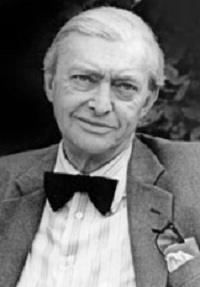 David Gascoyne
David Gascoyne
1916-2001
David Gascoyne was born in 1916 in Harrow, Middlesex, and educated at Salisbury Cathedral School and the Regent Street Polytechnic, London. His first collection of poetry, Roman Balcony and Other Poems, was published when he was 16 and, in 1933, Cobden-Sanderson published his novel, Opening Day. Both books are remarkable achievements for an adolescent and they were followed by the equally striking poetry collections Man’s Life Is This Meat (1936) and Hoelderlin’s Madness (1938), which established his reputation as one of the most original voices of the 1930s.
Gascoyne was among the earliest champions of Surrealism. In 1935, his A Short Survey of Surrealism was published and in the next year he was one of the organizers of the London International Surrealist Exhibition. As well as becoming internationally celebrated as a poet – especially after publication of his Poems 1937-1942, with its Graham Sutherland images – Gascoyne became highly regarded as a translator, notably of Hoelderlin and of the leading French Surrealists.
After the war, Gascoyne again lived in France (1947-48 and 1953-64), partly in Paris and partly in Provence. He consolidated his reputation with A Vagrant and Other Poems (1950) and with Night Thoughts (1956), commissioned by Douglas Cleverdon for BBC Radio. His Collected Poems, published by Oxford University Press in 1965, were reprinted six times. In 1994, Enitharmon published a substantial volume of Selected Poems.
David Gascoyne lived with his wife, Judy, at Northwood on the Isle of Wight. In 1996, he was made a Chevalier dans l’Ordre des Arts et Lettres by the French Ministry of Culture for his lifelong services to French Literature. He died on November 25, 2001, at the age of 85.
Source: http://www.connectotel.com/gascoyne/
 Bibliography
Bibliography
Press your browser’s BACK button to return to the previous page.
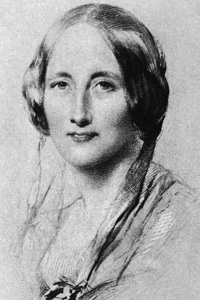 Elizabeth Gaskell
Elizabeth Gaskell
1810-1865
Elizabeth Cleghorn Gaskell, nee Stevenson (September 29, 1810-November 12, 1865), often referred to simply as Mrs. Gaskell, was a British novelist and short story writer during the Victorian era. Her novels offer a detailed portrait of the lives of many strata of society, including the very poor and, as such, are of interest to social historians as well as lovers of literature.
Gaskell was born Elizabeth Cleghorn Stevenson at 93 Cheyne Walk, Chelsea, which was then on the outskirts of London.
Much of her childhood was spent in Cheshire, where she lived with her aunt, Hannah Lumb, in Knutsford, a town she would later immortalize as Cranford. They lived in a large red brick house, Heathwaite, on Heathside (now Gaskell Avenue), which faces the large open area of Knutsford Heath.
On August 30, 1832, she married minister William Gaskell in Knutsford. They settled in Manchester, where William was the minister at Cross Street Unitarian Chapel. Manchester’s industrial surroundings would influence Gaskell’s novels in the industrial genre.
In 1850, following the publication of Mary Barton, the family moved to a villa in Plymouth Grove. Gaskell wrote all of her remaining literary works in this home while her husband held welfare committees and tutored the poor in his study. The Gaskells’ social circle included literary greats, religious dissenters and social reformers.
Gaskell died suddenly of a heart attack in 1865 while visiting a home she had just purchased in Holybourne, Hampshire.
Source: http://en.wikipedia.org/wiki/Elizabeth_Gaskell
 Bibliography
Bibliography
Press your browser’s BACK button to return to the previous page.
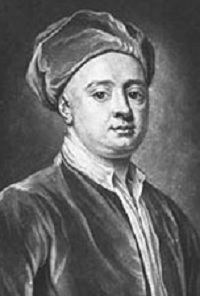 John Gay
John Gay
1685-1732
John Gay (June 30, 1685-December 4, 1732) was an English poet and dramatist and member of the Scriblerus Club.
Gay was born in Barnstaple, England, and was educated at the town’s grammar school. On leaving school, he was apprenticed to a silk mercer in London but soon returned to Barnstaple, where he was educated by his uncle, the Rev. John Hanmer, the Nonconformist minister of the town. He then returned to London.
The dedication of his Rural Sports (1713) to Alexander Pope was the beginning of a lasting friendship. In 1714, Gay wrote The Shepherd’s Week, a series of six pastorals drawn from English rustic life.
Gay had just been appointed secretary to the British ambassador to the court of Hanover through the influence of Jonathan Swift when the death of Anne, Queen of Great Britain, three months later put an end to all his hopes of official employment.
In 1715, probably with some help from Pope, he produced What D’ye Call It? a dramatic skit on contemporary tragedy. In 1716 appeared his “Trivia, or the Art of Walking the Streets of London,” a poem in three books, for which he acknowledged having received several hints from Swift. In January 1717, he produced the comedy, Three Hours after Marriage.
Gay had numerous patrons and, in 1720, he published Poems on Several Occasions by subscription, taking in £1000 or more. In 1727, he wrote for six-year-old Prince William, later the Duke of Cumberland, Fifty-One Fables in Verse.
His next work, The Beggar’s Opera, a ballad opera, was produced on January 29, 1728. This famous piece, which was said to have made “Rich gay and Gay rich,” was an innovation in many respects. The satire of the play has a double allegory.
He wrote a sequel, Polly, relating the adventures of Polly Peachum in the West Indies; its production was forbidden by the Lord Chamberlain. This act of “oppression” caused no loss to Gay. It proved an excellent advertisement for Polly, which was published by subscription in 1729 and brought its author several thousand pounds.
Gay died on December 4, 1732. He was buried in Westminster Abbey.
Source: http://en.wikipedia.org/wiki/John_Gay
 Bibliography
Bibliography
Press your browser’s BACK button to return to the previous page.
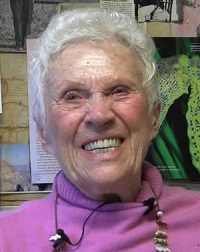 Jean Craighead George
Jean Craighead George
1919-2012
Jean Craighead George (July 2, 1919-May 15, 2012) was an American author. She lived in Chappaqua, New York.
Jean Craighead George wrote more than 100 popular books for young adults, including the Newbery Medal and Deutscher Jugendliteraturpreis-winning Julie of the Wolves and the Newbery Honor Book, My Side of the Mountain. Most of her books deal with topics related to the environment and the natural world. While mostly writing children’s fiction, she also wrote at least two guides to cooking with wild foods and an autobiography, Journey Inward.
George was born in Washington D.C. and raised in a family of naturalists. Her father, mother, brothers, aunts and uncles were students of nature. On weekends they camped in the woods near their Washington, D.C., home, climbed trees to study owls, gathered edible plants and made fish hooks from twigs. Her first pet was a turkey vulture.
George graduated, in 1940, from Pennsylvania State University with degrees in both English and science. In the 1940s, she was a member of the White House Press Corps and a reporter for The Washington Post. From 1969-1982, she was a writer and editor at Readers Digest. She married John Lothur George in 1944 and they divorced in 1963. Her first novels were written in collaboration with him, and she provided the illustrations for them. A later editor encouraged her to use other illustrators for her books.
George wrote more than 100 books, among them: My Side of the Mountain, a 1960 Newbery Honor Book, and its 1990 sequel, On the Far Side of the Mountain. In 1991, George became the first winner of the School Library Media Section of the New York Library Association’s Knickerbocker Award for Juvenile Literature, which was presented to her for the “consistent superior quality” of her literary works.
George died on May 15, 2012 at the age of 92 from complications of congestive heart failure.
Source: http://en.wikipedia.org/wiki/Jean_Craighead_George
 Bibliography
Bibliography
Press your browser’s BACK button to return to the previous page.
 Dave Gibbons
Dave Gibbons
1949-
Dave Gibbons (born April 14, 1949) is an English comic book artist, writer and sometime letterer. He is best known for his collaborations with writer Alan Moore, which include the miniseries, Watchmen, and the Superman story, “For the Man Who Has Everything.”
He also was an artist for the UK anthology 2000 AD, for which he contributed a large body of work from its first issue in 1977.
Source: http://en.wikipedia.org/wiki/Dave_Gibbons
 Bibliography
Bibliography
Press your browser’s BACK button to return to the previous page.
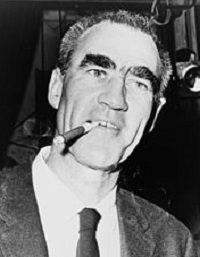 William Gibson
William Gibson
1914-2008
William Gibson (November 13, 1914-November 25, 2008) was an American playwright and novelist. He graduated from the City College of New York in 1938.
Gibson’s most famous play is The Miracle Worker (1959), the story of Helen Keller’s childhood education, which won him the Tony Award for Best Play.
His Broadway debut was with Two for the Seesaw in 1958, a critically acclaimed two-character play. His other works include: Dinny and the Witches (1948); the book for the musical version of Clifford Odets’ Golden Boy (1964); A Mass for the Dead (1968), an autobiographical family chronicle; A Cry of Players (1968); Goodly Creatures (1980); and Monday after the Miracle (1982). His ill-received Golda (1977), a work about the late Israeli Prime Minister Golda Meir, became popular in its revised version, Golda’s Balcony (2003).
Gibson also published a novel, The Cobweb, set in a psychiatric hospital, in 1955.
Source: http://en.wikipedia.org/wiki/William_Gibson_%28playwright%29
 Bibliography
Bibliography
Press your browser’s BACK button to return to the previous page.
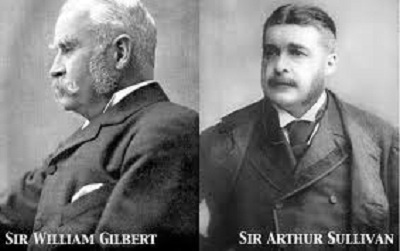 Gilbert and Sullivan
Gilbert and Sullivan
1836-1911/1842-1900
Gilbert and Sullivan refers to the Victorian-era partnership of librettist W.S. Gilbert (1836-1911) and composer Arthur Sullivan (1842-1900). The two men collaborated on 14 comic operas between 1871 and 1896, of which H.M.S. Pinafore, The Pirates of Penzance and The Mikado are among the best known.
Producer Richard D’Oyly Carte brought Gilbert and Sullivan together and nurtured their collaboration. He built the Savoy Theatre in 1881 to present their joint works (which came to be known as the Savoy Operas) and founded the D’Oyly Carte Opera Company, which performed and promoted Gilbert and Sullivan’s works for more than a century.
Gilbert, who wrote the words, created fanciful “topsy-turvy” worlds for these operas, where each absurdity is taken to its logical conclusion – fairies rub elbows with British lords, flirting is a capital offence, gondoliers ascend to the monarchy and pirates turn out to be noblemen who have gone wrong. Sullivan, six years Gilbert’s junior, composed the music, contributing memorable melodies that could convey both humor and pathos.
Their operas have enjoyed broad and enduring international success and are still performed frequently throughout the English-speaking world. Gilbert and Sullivan introduced innovations in content and form that directly influenced the development of musical theatre through the 20th century. The operas have also influenced political discourse, literature, film and television and have been widely parodied and pastiched by humorists.
Source: http://en.wikipedia.org/wiki/Gilbert_and_Sullivan
 Bibliography
Bibliography
Press your browser’s BACK button to return to the previous page.
 Charlotte Perkins Gilman
Charlotte Perkins Gilman
1860-1935
Charlotte Perkins Gilman was born Charlotte Anna Perkins. She was born July 3, 1860, in Hartford, Connecticut. Her father, Frederick Beecher Perkins, a magazine editor frequently left the family for long periods of time. Charlotte would often spend time with her great aunts, Catherine Beecher, advocate of “domestic feminism,” Isabella Beecher Hooker, an ardent suffragist who was a supporter of women’s right to vote, and Harriet Beecher Stower, author of Uncle Tom’s Cabin.
In 1884, at the age of 24, Gilman married Charles W. Stetson, a local artist. Soon after the birth of her first child, Gilman suffered from a near nervous breakdown. This experience led her to move to California, get a divorce and leave her daughter in the care of her ex-husband. In California, Gilman turned to writing as a way of earning money.
Gilman wrote poetry and short stories, among them “The Yellow Wallpaper,” which later became a feminist classic. Along with her poetry and fiction short stories, Gilman wrote many nonfiction stories. Her best-known work is “Women and Economics,” (1898) which argues that sexual and maternal roles of women have been overemphasized to the detriment of their social and economic potential and that only economic independence could bring true freedom.
Gilman became well known for her lectures about women’s topics. She emerged as a spokesperson for such topics as women’s perspectives on work and family. She believed that men and women should share the responsibility of housework and that women should be encouraged from a very early age to be independent and to work for themselves.
In 1900, Gilman married George Houghton Gilman, her first cousin, and continued to write. During this period, she wrote essays, such as “Human Work” (1904) and “The Man-Made World” (1911), in which she asserted that women should work outside of the home, fully using their abilities for the benefit of society and for their own satisfaction. From 1909 to 1916, Gilman founded, edited and wrote for the journal, Forerunner. Gilman also co-founded the Women’s Peace Party in 1915 with activist Jane Addams.
Gilman died on August 17, 1935, in Pasadena, California. She was 75 years old.
Source: http://www.library.csi.cuny.edu/dept/history/lavender/386/cgilman.html
 Bibliography
Bibliography
Press your browser’s BACK button to return to the previous page.
 Allen Ginsberg
Allen Ginsberg
1926-1997
Irwin Allen Ginsberg (June 3, 1926-April 5, 1997) was an American poet and one of the leading figures of the Beat Generation in the 1950s. He vigorously opposed militarism, materialism and sexual repression. Ginsberg is best known for his epic poem, “Howl,” in which he celebrated his fellow “angel-headed hipsters” and harshly denounced what he saw as the destructive forces of capitalism and conformity in the United States. This poem is one of the classic poems of the Beat Generation.
Ginsberg was born into a Jewish family in Newark, New Jersey, and grew up in nearby Paterson. As a young teenager, he began to write letters to The New York Times about political issues, such as World War II and workers’ rights. While in high school, Ginsberg began reading Walt Whitman, inspired by his teacher’s passionate reading.
In 1943, Ginsberg graduated from Eastside High School and briefly attended Montclair State College before entering Columbia University on a scholarship from the Young Men’s Hebrew Association of Paterson. In 1945, he joined the Merchant Marine to earn money to continue his education at Columbia. While at Columbia, Ginsberg contributed to The Columbia Review literary journal, The Jester humor magazine, won the Woodberry Poetry Prize and served as president of the Philolexian Society, the campus literary and debate group.
In 1986, Ginsberg was awarded the Golden Wreath by the Struga Poetry Evenings International Festival in Macedonia. At Struga, he met with the other Golden Wreath winners, Bulat Okudzhava and Andrei Voznesensky. Ginsberg won the National Book Award for his book, The Fall of America. In 1993, the French Minister of Culture awarded him the medal of Chevalier des Arts et des Lettres (the Knight of Arts and Letters).
With the exception of a special guest appearance at the NYU Poetry Slam on February 20, 1997, Ginsberg gave what is thought to be his last reading at The Booksmith in San Francisco on December 16, 1996. He died on April 5, 1997, surrounded by family and friends in his East Village loft in New York City, succumbing to liver cancer via complications of hepatitis. He was 70 years old.
Source: http://en.wikipedia.org/wiki/Allen_Ginsberg
 Bibliography
Bibliography
Press your browser’s BACK button to return to the previous page.
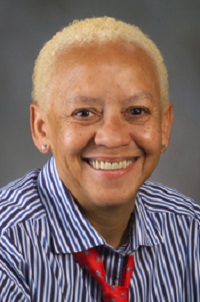 Nikki Giovanni
Nikki Giovanni
1943-
Yolande Cornelia “Nikki” Giovanni (born June 7, 1943) is an American poet, writer, commentator, activist and educator.
Nikki Giovanni was born in Knoxville, Tennessee, to Yolande Cornelia and Jones “Gus” Giovanni. She grew up in Lincoln Heights, a suburb of Cincinnati, Ohio, and in 1960 began her studies at Fisk University in Nashville, Tennessee, her grandfather’s alma mater. She graduated in 1967 with honors, receiving a B.A. in history. Afterward, she went on to attend the University of Pennsylvania and Columbia University. In 1969, Giovanni began teaching at Livingston College of Rutgers University and, since 1987, she has taught writing and literature at Virginia Tech, where she is a University Distinguished Professor.
The civil rights and black power movements inspired her early poetry that was collected in Black Feeling, Black Talk (1967), Black Judgment (1968) and Re: Creation (1970). She has since written more than two dozen books, including volumes of poetry, illustrated children’s books and three collections of essays. Her book, Love Poems (1997), was written in memory of Tupac Shakur.
Those Who Ride the Night Winds (1983) acknowledged notable black figures. Giovanni collected her essays in the 1988 volume, Sacred Cows … and Other Edibles. Some of her more recent works include Acolytes, a collection of 80 new poems, and On My Journey Now.
Giovanni’s most recent work, Bicycles: Love Poems (2009), is a collection of poems that serve as a companion to her 1997 Love Poems.
Source: http://en.wikipedia.org/wiki/Nikki_Giovanni
 Bibliography
Bibliography
Press your browser’s BACK button to return to the previous page.
 George Gissing
George Gissing
1857-1903
George Robert Gissing (November 22, 1857-December 28, 1903) was an English novelist who published 23 novels between 1880 and 1903.
Gissing was born in Wakefield, Yorkshire, to lower-middle-class parents. A brilliant student, he won a scholarship to Owens College, the present-day University of Manchester, where he excelled, winning many coveted prizes, including the Shakespeare prize in 1875. His academic career ended in disgrace when he fell in love with a young prostitute, Marianne Helen (Nell) Harrison. In an attempt to keep her from the streets, he gave her money and, when his own funds ran short, he began to steal from his fellow students. Eventually, he was caught, expelled from the university, prosecuted for theft and sentenced to one month’s hard labor in prison.
In October 1876, with support from sympathizers, he was sent to the United States where, when close to starvation, he managed to earn a precarious living by writing short stories for The Chicago Tribune.
On returning to England in autumn 1877, Gissing married Marianne and settled in London to write novels. His first book, Workers in the Dawn, published at his own expense in 1880, was a complete failure and Gissing took up private tutoring to support himself and his wife, who by now was an alcoholic. In 1883, the couple separated but he gave her a weekly income on what little money he had until her alcohol-related death in 1888.
In 1884, his second novel, The Unclassed, met with moderate critical acclaim. Gissing then published new novels almost every year, but for several years more earned very little from his writing. Most of his early novels – Demos (1886), Thyrza (1887) and The Nether World (1889) – dealt with poverty and the working classes, as seen at first-hand in his life with Nell. In 1888-89, he spent several months in Italy; his next novel, The Emancipated, was a story about free-thinking English expatriates.
Between 1891 and 1897, Gissing produced his most notable works, New Grub Street, Born in Exile, The Odd Women, In the Year of Jubilee and The Whirlpool. During this period he produced almost 70 short stories, having become aware of the financial rewards of writing short fiction for the press, and was able to give up teaching.
Gissing died from emphysema aged 46 on December 28, 1903, after having caught a chill on an ill-advised winter walk.
Source: http://en.wikipedia.org/wiki/George_Gissing
 Bibliography
Bibliography
Press your browser’s BACK button to return to the previous page.
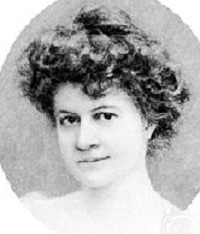 Ellen Glasgow
Ellen Glasgow
1873-1945
Ellen Anderson Gholson Glasgow (April 22, 1873-November 21, 1945) was a Pulitzer Prize-winning American novelist who portrayed the changing world of the contemporary South.
Born into an elite Virginia family in Richmond, Virginia, the young Glasgow developed in a different way from that traditional to women of her class. Due to poor health, she was educated at home in Richmond. She read deeply in philosophy, social and political theory and European and British literature. She spent her summers at her family’s Bumpass, Virginia, estate, the historic Jerdone Castle plantation, a setting that she used in her writings.
As the United States women’s suffrage movement was developing in the early 1900s, Glasgow marched in the English suffrage parades in the spring 1909. Later she spoke at the first suffrage meeting in Virginia. Glasgow felt that the movement came “at the wrong moment” for her and her participation and interest waned. Glasgow did not at first make women’s roles her major theme and she was slow to place heroines rather than heroes at the centers of her stories. Her later works, however, have heroines who display many of the attributes of women involved in the political movement.
Glasgow died on November 21, 1945 and is buried in Hollywood Cemetery, Richmond, Virginia.
Source: http://en.wikipedia.org/wiki/Ellen_Glasgow
 Bibliography
Bibliography
Press your browser’s BACK button to return to the previous page.
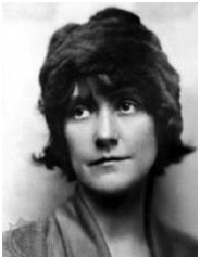 Susan Glaspell
Susan Glaspell
1876-1948
Susan Keating Glaspell (July 1, 1876-July 27, 1948) was an American Pulitzer Prize-winning playwright, actress, director, novelist, biographer and poet. She was a founding member of the Provincetown Players, one of the most important collaboratives in the development of modern drama in the United States.
Glaspell was born in 1876 to Elmer S. Glaspell and Alice Keating in Davenport, Iowa. She attended public schools in Davenport and went on to graduate from Drake University in Des Moines with a Bachelor’s degree in 1899. She worked as a reporter for a Des Moines paper, where she was appointed to report on the murder trial of John Hossack in 1900, which would be the basis for two of Glaspell’s best-remembered works, “A Jury of Her Peers” (1917), a short story, and the one-act-play, Trifles (1916).
Glaspell studied for one semester of graduate school at the University of Chicago in 1902. She began to publish her fiction in periodicals. “For the Love of the Hills” won a prize of $500 from Black Cat Magazine, an augur of her future success. Glaspell also received praise from magazines such as Harper’s, the Ladies’ Home Journal, American Magazine and The Women’s Home Companion.
Her first novel, The Glory of the Conquered, set in Chicago, was published in 1909. She also published The Visioning (1911) and Fidelity (1915).
By the time she wrote and published Fidelity, Glaspell had already moved to Provincetown, Massachusetts, spending summers in Greenwich Village in New York City. There she wrote her first play, Suppressed Desires. She then wrote a biography of her late husband, The Road to the Temple. During the late 1920s, she wrote three novels, including the bestselling Brook Evans. She also wrote the play, Alison’s House, for which she was awarded the Pulitzer Prize.
Glaspell’s last three novels increasingly focused on the Midwest, on family life and on theistic questions. They included The Morning Is Near Us (1939), Norma Ashe (1942) and Judd Rankin’s Daughter (1945).
Glaspell died in Provincetown in 1948.
Source: http://en.wikipedia.org/wiki/Susan_Glaspell
 Bibliography
Bibliography
Press your browser’s BACK button to return to the previous page.
 William Godwin
William Godwin
1756-1836
William Godwin (March 3, 1756-April 7, 1836) was an English journalist, political philosopher and novelist. He is considered one of the first exponents of utilitarianism and the first modern proponent of anarchism.
Godwin is most famous for two books that he published within the space of a year: An Enquiry Concerning Political Justice, an attack on political institutions, and Things as They Are; or the Adventures of Caleb Williams, which attacks aristocratic privilege, but also is the first mystery novel. Based on the success of both, Godwin featured prominently in the radical circles of London in the 1790s.
In the ensuing conservative reaction to British radicalism, Godwin was attacked, in part because of his marriage to the pioneering feminist writer Mary Wollstonecraft in 1797 and his candid biography of her after her death; their daughter, Mary Godwin (later Mary Shelley) would go on to write Frankenstein and marry the poet, Percy Bysshe Shelley.
Godwin wrote prolifically in the genres of novels, history and demography throughout his lifetime. With his second wife, Mary Jane Clairmont, he wrote children’s primers on Biblical and classical history, which he published along with such works as Charles and Mary Lamb’s Tales from Shakespeare. Using the pseudonym Edward Baldwin, he wrote a variety of books for children, including a version of “Jack and the Beanstalk.”
Source: http://en.wikipedia.org/wiki/William_Godwin
 Bibliography
Bibliography
Press your browser’s BACK button to return to the previous page.
 Johann Wolfgang von Goethe
Johann Wolfgang von Goethe
1750-1832
Johann Wolfgang von Goethe (August 28, 1749-March 22, 1832) was a German writer, pictorial artist, biologist, theoretical physicist and polymath. His works span the fields of poetry, drama, prose, philosophy and science. His Faust has been called the greatest long poem of modern European literature. His other well-known literary works include his numerous poems, the Bildungsroman Wilhelm Meister’s Apprenticeship and the epistolary novel, The Sorrows of Young Werther.
Goethe was one of the key figures of German literature and the movement of Weimar Classicism in the late 18th and early 19th centuries; this movement coincides with Enlightenment, Sentimentalism (Empfindsamkeit), Sturm und Drang and Romanticism. The author of the scientific text, Theory of Colours, his influential ideas on plant and animal morphology and homology were extended and developed by 19th century naturalists, including Charles Darwin. He also served at length as the Privy Councilor of the duchy of Saxe-Weimar.
In politics, Goethe was conservative. At the time of the French Revolution, he thought the enthusiasm of the students and professors to be a perversion of their energy and remained skeptical of the ability of the masses to govern. Likewise, he “did not oppose the War of Liberation waged by the German states against Napoleon, but remained aloof from the patriotic efforts to unite the various parts of Germany into one nation; he advocated instead the maintenance of small principalities ruled by benevolent despots.”
Goethe died in Weimar in 1832.
Source: http://en.wikipedia.org/wiki/Johann_Wolfgang_von_Goethe
 Bibliography
Bibliography
Press your browser’s BACK button to return to the previous page.
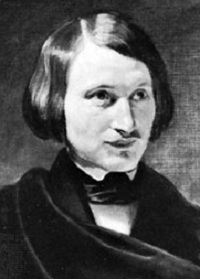 Nikolai Gogol
Nikolai Gogol
1809-1852
Russian novelist Nikolai Gogol (March 19, 1809, Sorochintsy, near Poltava, Ukraine, Russian Empire-February 21, 1852, Moscow, Russia) was a Russian writer.
Gogol tried acting and worked at minor government jobs in St. Petersburg before achieving literary success with Evenings on a Farm near Dikanka (1831-32). His pessimism emerged in such stories as “Taras Bulba” (1835) and “Diary of a Madman” (1835). His farcical drama, The Government Inspector (1836), lampooned a corrupt government bureaucracy.
From 1836 to 1846, he lived in Italy. During this time, he laid the foundations of 19th century Russian realism with his masterpiece, the novel Dead Souls (1842) – a satire about serfdom and bureaucratic inequities in which he hoped to castigate abuses and guide his countrymen through laughter – and his story, “The Overcoat” (1842). His Collected Stories (1842) received great acclaim. Soon afterward, he came under the influence of a fanatical priest who prompted him to burn the manuscript of the second volume of Dead Souls.
He died a few days later at age 42, perhaps of intentional starvation, on the verge of madness.
Source: http://www.biography.com/people/nikolay-gogol-39960
 Bibliography
Bibliography
Press your browser’s BACK button to return to the previous page.
 Michael Gold
Michael Gold
1893-1967
Michael “Mike” Gold (April 12, 1893-May 14, 1967) is the pen-name of Jewish-American writer Itzok Isaac Granich. A lifelong communist, Gold was a novelist and literary critic, his semi-autobiographical novel, Jews without Money (1930), was a bestseller.
Gold was born to Jewish immigrants from Bessarabia: Chaim Granich and Gitl Schwartz. He had two brothers. The family lived on the Lower East Side of New York City. Gold signed his first published writings as Irwin Granich. He reportedly took the pseudonym Michael Gold at the time of the Palmer Raids on radicals in 1919-20 from a Jewish Civil War veteran he admired for having fought to “free the slaves.” During the 1930s and 1940s, Gold was considered the Dean of U.S. Proletarian Literature.
The Masses, a socialist journal edited by Floyd Dell and Max Eastman, published his first pieces in August 1914. “Three Whose Hatred Killed Them” is a poem about anarchists killed in a Lexington Avenue tenement by their own bomb. Gold praised their pure intentions. Until his death, he was an ardent supporter of the Communist Revolution of 1917 and the Soviet Union in all its phases. In 1921-22, Gold and Claude McKay became executive editors of Max Eastman’s magazine, The Liberator. In 1925, Gold visited Moscow. In 1926, he was a founding editor of The New Masses, which published leftist works and also set up radical theater groups. Gold was editor-in-chief from 1928 to 1934. As he had at The Liberator, he liked to publish letters, poems and fiction by ordinary workers more than those of literary leftists.
Throughout the 1920s, Gold worked on his one novel, Jews without Money, a fictionalized autobiography about growing up in the impoverished world of the Lower East Side. Published in the midst of the Great Depression, in 1930, it was an immediate success, went through many reprintings in its first years and was translated into more than 14 languages. It also became a prototype for the American Proletarian novel. Its popularity made Gold a national figure and cultural commissar of the Communist Party. He was a daily columnist for its paper, The Daily Worker, until his death.
Gold died in Terra Linda, California, on May 14, 1967, from complications following a stroke. He was 74 years old.
Source: http://en.wikipedia.org/wiki/Mike_Gold
 Bibliography
Bibliography
Press your browser’s BACK button to return to the previous page.
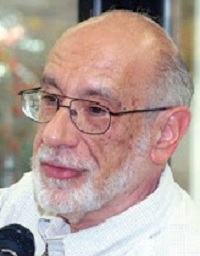 Albert Goldbarth
Albert Goldbarth
1948-
On January 31, 1948, Albert Goldbarth was born in Chicago, Illinois. He received his B.A. from the University of Illinois, Chicago Circle campus, in 1969 and his M.F.A. from the University of Iowa in 1971. He taught at the Elgin Community College in Chicago until 1972 and as a coordinator for the Traveling Writers Workshop for public schools in the Chicago area.
In 1974, he completed a year of classes at the University of Utah while working toward his Ph.D in creative writing. Over a year’s time, Goldbarth received the Poetry Northwest Theodore Roethke Prize, published a chapbook, Under Cover, and had completed two full-length poetry collections, Coprolites and Opticks (published in 1974). He left Utah early to pursue a teaching career and worked briefly at Cornell and Syracuse universities before moving to the University of Texas, Austin, where he taught from 1977 to 1987.
Since then, he has published more than 25 collections of poetry, including To Be Read in 500 Years: Poems (2009); The Kitchen Sink: New and Selected Poems 1972-2007 (2007); Saving Lives (2001) and Heaven and Earth: A Cosmology (1991), both of which won the National Book Critics Circle Award for poetry (Goldbarth is the only poet to have received the award twice); Popular Culture (1990), which received the Ohio State University Press/The Journal Award; and Jan. 31 (1974), which was nominated in 1975 for the National Book Award.
He has also written several collections of essays, including Many Circles (2001), winner of the PEN West Creative Nonfiction Award; A Sympathy of Souls (1990); Great Topics of the World (1994); and a novel, Pieces of Payne (2001). His work has been featured in numerous anthologies, including The Harvard Book of Contemporary Poetry (1985).
Goldbarth’s honors include fellowships from the National Endowment for the Arts and the Guggenheim Foundation. He was also named to the arts advisory board of the Judah L. Magnes Jewish Museum in Berkeley, California, in 1999.
He is Adele Davis Distinguished Professor of Humanities at Wichita State University, where he has taught since 1987. He lives in Wichita, Kansas.
Source: http://www.poets.org/poet.php/prmPID/1295
 Bibliography
Bibliography
Press your browser’s BACK button to return to the previous page.
 William Golding
William Golding
1911-1993
Sir William Gerald Golding (September 19, 1911-June 19, 1993) was a British novelist, poet, playwright and Nobel Prize laureate for literature, best known for his novel, Lord of the Flies. He was also awarded the Booker Prize for literature in 1980 for his novel, Rites of Passage, the first book of the trilogy, To the Ends of the Earth.
Golding grew up at his family home in Marlborough, Wiltshire, where his father (Alec Golding) was a science master at Marlborough Grammar School. In 1930, Golding went to Oxford University as an undergraduate at Brasenose College, where he read Natural Sciences for two years before transferring to English Literature. Golding took his B.A. (Honors) Second Class in the summer of 1934 and later that year published his first book, Poems.
Golding joined the Royal Navy in 1940. During World War II, he was briefly involved in the pursuit and sinking of Germany’s mightiest battleship, the Bismarck. He also participated in the invasion of Normandy on D-Day, commanding a landing ship that fired salvoes of rockets onto the beaches, and then in a naval action at Walcheren in which 23 out of 24 assault craft were sunk. At the war’s end, he returned to teaching and writing.
Golding died of heart failure on June 19, 1993
Source: http://en.wikipedia.org/wiki/William_Golding
 Bibliography
Bibliography
Press your browser’s BACK button to return to the previous page.
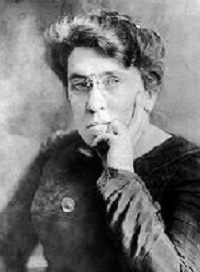 Emma Goldman
Emma Goldman
1869-1940
Emma Goldman (June 27, 1869-May 14, 1940) was an anarchist known for her political activism, writing and speeches. She played a pivotal role in the development of anarchist political philosophy in North America and Europe in the first half of the 20th century.
Born in Kovno in the Russian Empire (now Kaunas in Lithuania), Goldman emigrated to the U.S. in 1885 and lived in New York City, where she joined the burgeoning anarchist movement. Attracted to anarchism after the Haymarket affair, Goldman became a writer and a renowned lecturer on anarchist philosophy, women’s rights and social issues, attracting crowds of thousands. She and anarchist writer Alexander Berkman, her lover and lifelong friend, planned to assassinate Henry Clay Frick as an act of propaganda. Though Frick survived the attempt on his life, Berkman was sentenced to 22 years in prison. Goldman was imprisoned several times in the years that followed for “inciting to riot” and illegally distributing information about birth control. In 1906, Goldman founded the anarchist journal, Mother Earth.
In 1917, Goldman and Berkman were sentenced to two years in jail for conspiring to “induce persons not to register” for the newly instated draft. After their release from prison, they were arrested – along with hundreds of others – and deported to Russia. Initially supportive of that country’s Bolshevik revolution, Goldman quickly voiced her opposition to the Soviet use of violence and the repression of independent voices. In 1923, she wrote a book about her experiences, My Disillusionment in Russia. While living in England, Canada and France, she wrote an autobiography called Living My Life. After the outbreak of the Spanish Civil War, she traveled to Spain to support the anarchist revolution there. She died in Toronto on May 14, 1940.
During her life, Goldman was lionized as a free-thinking “rebel woman” by admirers and derided by critics as an advocate of politically motivated murder and violent revolution. Her writing and lectures spanned a wide variety of issues, including prisons, atheism, freedom of speech, militarism, capitalism, marriage, free love and homosexuality. Although she distanced herself from first-wave feminism and its efforts toward women’s suffrage, she developed new ways of incorporating gender politics into anarchism. After decades of obscurity, Goldman’s iconic status was revived in the 1970s when feminist and anarchist scholars rekindled popular interest in her life.
Source: http://en.wikipedia.org/wiki/Emma_Goldman
 Bibliography
Bibliography
Press your browser’s BACK button to return to the previous page.
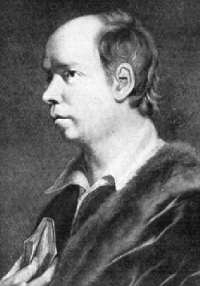 Oliver Goldsmith
Oliver Goldsmith
1730-1774
Oliver Goldsmith (November 10, 1730-April 4, 1774) was an Anglo-Irish writer and poet who is best known for his novel, The Vicar of Wakefield (1766), his pastoral poem, “The Deserted Village” (1770) and his plays, The Good-Natur’d Man (1768) and She Stoops to Conquer (1771, first performed in 1773). He also wrote An History of the Earth and Animated Nature. He is thought to have written the classic children’s tale, The History of Little Goody Two-Shoes, the source of the phrase “goody two-shoes.”
Goldsmith’s birth date and year are not known with certainty. According to the Library of Congress authority file, he told a biographer that he was born on November 29, 1731, or perhaps in 1730. Other sources have indicated November 10 on any year from 1727 to 1731; November 10, 1730 is now the most commonly accepted birth date.
The location of his birthplace is also uncertain. He was born either in the townland of Pallas, near Ballymahon, County Longford, Ireland, where his father was the Anglican curate of the parish of Forgney, or at the residence of his maternal grandparents, Smith Hill House in the diocese of Elphin, County Roscommon, where his grandfather, Oliver Jones, was a clergyman and master of the Elphin diocesan school.
In 1744, Goldsmith went up to Trinity College, Dublin. Neglecting his studies in theology and law, he fell to the bottom of his class. He was graduated in 1749 with a Bachelor of Arts but without the discipline or distinction that might have gained him entry to a profession in the church or the law; his education seemed to have given him mainly a taste for fine clothes, playing cards, singing Irish airs and playing the flute. He lived for a short time with his mother, tried various professions without success, studied medicine desultorily at the University of Edinburgh and the University of Leiden and set out on a walking tour of Flanders, France, Switzerland and Northern Italy, living by his wits (busking with his flute).
He settled in London in 1756, where he briefly held various jobs, including an apothecary’s assistant and an usher of a school. Perennially in debt and addicted to gambling, Goldsmith produced a massive output as a hack writer for the publishers of London, but his few painstaking works earned him the company of Samuel Johnson, with whom he was a founding member of “The Club.” During this period, he used the pseudonym “James Willington” (the name of a fellow student at Trinity) to publish his 1758 translation of the autobiography of the Huguenot Jean Marteilhe.
His premature death in 1774 may have been partly due to his own misdiagnosis of his kidney infection.
Source: http://en.wikipedia.org/wiki/Oliver_Goldsmith
 Bibliography
Bibliography
Press your browser’s BACK button to return to the previous page.
 Peter Goldsworthy
Peter Goldsworthy
1951-
Peter Goldsworthy (born October 12, 1951) is an Australian writer and medical practitioner. He has won awards for his short stories, poetry, novels and opera libretti.
Goldsworthy was born in Minlaton, South Australia, and grew up in various Australian country towns, finishing his schooling in Darwin in the Northern Territory. He graduated in medicine from the University of Adelaide in 1974 and worked in alcohol and drug rehabilitation for several years but, with his poetry being published in Westerly and The Friendly Street Poetry Reader, he started dividing his working time equally between general practice and writing.
Source: http://en.wikipedia.org/wiki/Peter_Goldsworthy
 Bibliography
Bibliography
Press your browser’s BACK button to return to the previous page.
 Michel Gondry
Michel Gondry
1963-
Michel Gondry (born May 8, 1963) is an Academy Award-winning filmmaker whose credits include being a commercial director, music video director and screenwriter.
Gondry was born in Versailles, France. His career as a filmmaker began with creating music videos for the French rock band, Oui Oui, in which he also served as a drummer. The style of his videos for Oui Oui caught the attention of music artist Bjork, who asked him to direct the video for her song, “Human Behaviour.” Gondry has also created numerous television commercials.
Gondry made his feature film debut in 2001 with Human Nature. His second film, Eternal Sunshine of the Spotless Mind, was released in 2004. He also directed the musical documentary, Dave Chappelle’s Block Party (2006). His next film, The Science of Sleep, hit theaters in September 2006.
Gondry was an Artist-in-Residence at the Massachusetts Institute of Technology in 2005 and 2006.
Gondry directed “Unnatural Love,” the fifth episode in season two of HBO’s Flight of the Conchords. Interior Design, one-third of the 2008 anthology film Tokyo!, was his next project.
In 2009, The Thorn in the Heart, another feature documentary, was released. In 2011, Gondry directed The Green Hornet, a superhero film.
Gondry lives in Brooklyn, New York.
Source: http://en.wikipedia.org/wiki/Michel_Gondry
 Bibliography
Bibliography
Press your browser’s BACK button to return to the previous page.
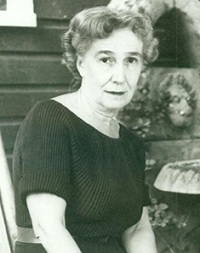 Caroline Gordon
Caroline Gordon
1895-1981
Caroline Ferguson Gordon (October 6, 1895-April 11, 1981) was a notable American novelist and literary critic who, while still in her 30s, was the recipient of two prestigious literary awards, a 1932 Guggenheim Fellowship and a 1934 O. Henry Award.
Born and raised in Todd County, Kentucky, at her family’s plantation home known as “Woodstock,” Gordon received a high level of education at her father’s Clarksville Classical School for Boys in neighboring Montgomery County, Tennessee. By 1916, she had graduated from West Virginia’s Bethany College and obtained a job as a writer of society news for The Chattanooga Reporter newspaper. After eight years, she left Chattanooga and returned home where, at the age of 29, she met Allen Tate, a free-spirited “bohemian” poet, commentator and essayist, four years her junior. They immediately embarked on a passionate love affair that culminated in a pregnancy and a May 15, 1925 wedding. Their daughter, Nancy, was born in September.
Over the next 20 years, Caroline Gordon (who retained her maiden name) and Allen Tate lived in Tate’s house in Clarksville. Their guests included some of the best-known writers of their time, including F. Scott Fitzgerald, Ernest Hemingway, William Faulkner, Flannery O’Connor, T.S. Eliot, Robert Penn Warren and Ford Madox Ford, the author whom Gordon considered her mentor. Ford counseled and prodded her into completing her first novel, Penhally, published in 1931. Gordon received both of her awards, the Guggenheim and the O. Henry, during this early period. The O. Henry was a unique second-place prize awarded for her 1934 short story, “Old Red,” published in Scribner’s Magazine. There were 17 third-place recipients that year, including William Saroyan, Pearl Buck, Erskine Caldwell, William Faulkner, John Steinbeck and Thomas Wolfe.
Between 1934 and 1972, Gordon published nine additional novels, five of which were written during the late 1930s and the World War II years.
Gordon’s early fiction was influenced by her association with the Southern Agrarians. Paul V. Murphy writes that she “exhibited a Southern nostalgia as strong as any member of the group, including Davidson, the most unreconstructed of the Agrarians.”
Caroline Gordon’s marriage to Allen Tate ended in divorce in 1945, followed by a 1946 remarriage and an ultimate divorce in 1959. They continued to correspond, however, and remained friends. On November 24, 1947, during another difficult period in her marriage, Gordon converted to Catholicism.
She continued to write until crippled by a March 1, 1981, stroke in San Cristobal de las Casas, Chiapas, Mexico, where she lived in her later years. She died six weeks later, following surgery, at the age of 85.
Source: http://en.wikipedia.org/wiki/Caroline_Gordon
 Bibliography
Bibliography
Press your browser’s BACK button to return to the previous page.
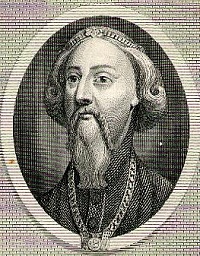 John Gower
John Gower
1330-1408
John Gower, poet and friend of Chaucer, was born around 1330 into a prominent Yorkshire family that held properties in Kent, Yorkshire, Norfolk and Suffolk. Gower’s coat of arms is identical to those of Sir Robert Gower of Brabourne. Nothing is known of his education, though it has been speculated that he was trained in law. Gower himself held properties in Suffolk and Kent, where he seems to have resided until taking up residence in the priory of St. Mary Overies in Southwark, London, around 1377.
Gower’s first work was “Mirour de l’Omme” (“Mirror of Man,” 1376-79), an allegorical poem in French meditating on the fall of man and the effect of sin on the world. Gower later Latinized the title to “Speculum Hominis” and still later changed it to “Speculum Meditantis” to fit with the titles of his later works. Around 1377, Gower began work on “Vox Clamantis” (“The Clamoring Voice”), an essay in Latin elegiac verse. Gower’s moral and philosophical writings were highly praised by his peers. In 1385, Gower’s good friend, Geoffrey Chaucer, dedicated “Troilus and Criseyde” to him, giving him the epithet “moral Gower.”
In 1386, Gower began work on his most acclaimed work, Confessio Amantis (Lover’s Confession). Unlike his previous works, Gower wrote the Confessio in English at the request of Richard II, who was concerned that so little was being written in English. It is a collection of tales and exempla treating of courtly love.
Next, Gower composed a series of Latin poems, as well as Traitie, a sequence of French ballads in rhyme royal. In 1397, Gower married Agnes Groundolf, probably his second wife. By this time, Gower was nearly blind, so the marriage may have been one of convenience. King Richard II was finally deposed by Parliament in 1399, replaced by Henry Lancaster as King Henry IV. Soon afterward, Gower composed a sequel to Vox Clamantis, the Cronica Tripertita (Tripartite Chronicle), in which he condemned the vices of King Richard II and his court. At this time, Gower also wrote Latin verses in praise of the new King, as well as his last English work, “To King Henry, in Praise of Peace.”
In 1400, Gower dedicated and presented his French work, Cinkante Balades (Fifty Ballads), which some attribute to his younger days, to King Henry.
Old and blind, John Gower died in 1408, leaving a considerable estate. He was buried in St. Mary Overies (later St. Saviour’s), now Southwark Cathedral, where his tomb can still be seen today.
Source: http://www.luminarium.org/medlit/gowerbio.htm
 Bibliography
Bibliography
Press your browser’s BACK button to return to the previous page.
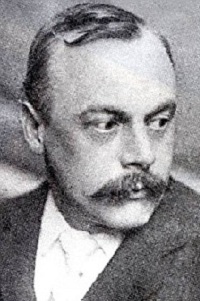 Kenneth Grahame
Kenneth Grahame
1859-1932
Kenneth Grahame (March 8, 1859-July 6, 1932) was a British writer, most famous for The Wind in the Willows (1908), one of the classics of children’s literature. He also wrote “The Reluctant Dragon;” both books were later adapted into Disney films.
Grahame was born in Edinburgh. He was an outstanding pupil at St. Edward’s School in Oxford and wanted to attend Oxford University but was not allowed to do so by his guardian on grounds of cost. Instead, he was sent to work at the Bank of England in 1879 and rose through the ranks until retiring as its Secretary in 1908 due to ill health. In addition to ill health, Grahame’s retirement was precipitated in 1903 by a strange, possibly political, shooting incident at the bank. Grahame was shot at three times, though all of the bullets missed.
While still a young man, Grahame began to publish light stories in London periodicals such as the St. James Gazette. Some of these stories were collected and published as Pagan Papers in 1893 and, two years later, The Golden Age. These were followed by Dream Days in 1898, which contains “The Reluctant Dragon.”
Kenneth Grahame died in Pangbourne, Berkshire, in 1932.
Source: http://en.wikipedia.org/wiki/Kenneth_Grahame
 Bibliography
Bibliography
Press your browser’s BACK button to return to the previous page.
 Robert Graves
Robert Graves
1895-1985
Robert von Ranke Graves (also known as Robert Ranke Graves and most commonly as Robert Graves, July 24, 1895-December 7, 1985) was an English poet, translator and novelist. During his long life he produced more than 140 works. Graves’ poems – together with his translations and innovative interpretations of the Greek myths, his memoir of his early life, including his role in World War I, Goodbye to All That, and his historical study of poetic inspiration, The White Goddess – have never been out of print.
He earned his living from writing particularly popular historical novels such as I, Claudius, King Jesus, The Golden Fleece and Count Belisarius. He also was a prominent translator of classical Latin and ancient Greek texts; his versions of The Twelve Caesars and The Golden Ass remain popular today for their clarity and entertaining style. Graves was awarded the 1934 James Tait Black Memorial Prize for both I, Claudius and Claudius the God.
During the early 1970s, Graves began to suffer from increasingly severe memory loss and, by his 80th birthday in 1975, he had come to the end of his working life. He died from heart failure on December 7, 1985, aged 90.
Source: http://en.wikipedia.org/wiki/Robert_Graves
 Bibliography
Bibliography
Press your browser’s BACK button to return to the previous page.
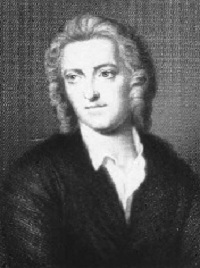 Thomas Gray
Thomas Gray
1716-1771
Thomas Gray (December 26, 1716-July 30, 1771) was a poet, letter-writer, classical scholar and professor at Cambridge University.
Gray was born in Cornhill, London, the son of an exchange broker and a milliner. He was educated at Eton College, where his uncle was one of the masters. In 1734, Gray went up to Peterhouse, Cambridge. Supposedly he was intended for the law but, in fact, he spent his time as an undergraduate reading classical and modern literature and playing Vivaldi and Scarlatti on the harpsichord for relaxation.
Gray began seriously writing poems in 1742, mainly after his close friend Richard West died. He moved to Cambridge and began a self-imposed program of literary study, becoming one of the most learned men of his time, though he claimed to be lazy by inclination. He became a Fellow first of Peterhouse, and later of Pembroke College, Cambridge.
Gray spent most of his life as a scholar in Cambridge and only later in his life did he begin travelling. Although he was one of the least productive poets (his collected works published during his lifetime amount to fewer than 1,000 lines), he is regarded as the foremost English-language poet of the mid-18th century. In 1757, he was offered the post of Poet Laureate, which he refused.
Gray was so self-critical and fearful of failure that he only published 13 poems during his lifetime. He once wrote that he feared his collected works would be “mistaken for the works of a flea.”
It is believed that Gray began writing his masterpiece, “Elegy Written in a Country Churchyard,” in the graveyard of the church in Stoke Poges, Buckinghamshire, in 1742, completing it, after several years lying unfinished, in 1750. The poem was a literary sensation when published by Robert Dodsley in February 1751.
Gray also wrote light verse, including “Ode on the Death of a Favorite Cat, Drowned in a Tub of Gold Fishes,” a mock elegy concerning Horace Walpole’s cat. He is also well known for his phrase, “Where ignorance is bliss, ’tis folly to be wise,” from his “Ode on a Distant Prospect of Eton College” (1742).
Gray died on July 30, 1771, in Cambridge and was buried beside his mother in the churchyard of Stoke Poges, the setting for his famous “Elegy.”
Source: http://en.wikipedia.org/wiki/Thomas_Gray
 Bibliography
Bibliography
Press your browser’s BACK button to return to the previous page.
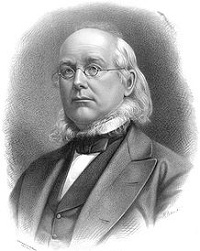 Horace Greeley
Horace Greeley
1811-1872
Horace Greeley (February 3, 1811-November 29, 1872) was an American editor of a leading newspaper, a founder of the Liberal Republican Party, a reformer and a politician. His New York Tribune was America’s most influential newspaper from the 1840s to the 1870s. Greeley used it to promote the Whig and Republican parties, as well as opposition to slavery and a host of reforms. Crusading against the corruption of Ulysses S. Grant’s Republican administration, he was the new Liberal Republican Party’s candidate in the 1872 U.S. presidential election. Despite having the additional support of the Democratic Party, he lost in a landslide. He is currently the only presidential candidate who has died during the electoral process.
Greeley was born in Amherst, New Hampshire, the son of poor farmers Zaccheus and Mary Greeley. He declined a scholarship to Phillips Exeter Academy and left school at the age of 14; he apprenticed as a printer in Poultney, Vermont, at The Northern Star, and moved to New York City in 1831. In 1834, he founded the weekly The New Yorker, which consisted mostly of clippings from other magazines.
In 1838, leading Whig politicians selected him to edit a major national campaign newspaper, The Jeffersonian, which reached 15,000 circulation. In 1840, he edited a major campaign newspaper, The Log Cabin, which reached 90,000 subscribers nationwide and helped elect William Henry Harrison president on the Whig ticket. In 1841, he merged his papers into The New York Tribune. Greeley was editor of The Tribune for the rest of his life, using it as a platform for advocacy of all of his causes.
Greeley supported liberal policies toward settlers; in a July 13, 1865 editorial, he famously advised “Go West, young man, go West and grow up with the country.” A champion of the working man, he attacked monopolies of all sorts and rejected land grants to railroads. Industry would make everyone rich, he insisted, as he promoted high tariffs. He supported vegetarianism, opposed liquor and paid serious attention to any “-ism” anyone proposed. What made The Tribune such a success were the extensive news stories, very well written by brilliant reporters, together with feature articles by fine writers. He was an excellent judge of newsworthiness and quality of reporting. His editorials and news reports explaining the policies and candidates of the Whig Party were reprinted and discussed throughout the country.
Greeley made The Tribune the leading newspaper opposing the “Slave Power,” that is, what he considered the conspiracy by slave owners to seize control of the federal government and block the progress of liberty. In the secession crisis of 1861, he took a hard line against the Confederacy. Theoretically, he agreed, the South could declare independence; but in reality he said there was “a violent, unscrupulous, desperate minority who have conspired to clutch power” – secession was an illegitimate conspiracy that had to be crushed by federal power. He took a Radical Republican position during the war, in opposition to Lincoln’s moderation. In the summer of 1862, he wrote a famous editorial, “The Prayer of Twenty Millions,” demanding a more aggressive attack on the Confederacy and faster emancipation of the slaves. A month later, he hailed Lincoln’s “Emancipation Proclamation.”
After supporting Ulysses Grant in the 1868 election, Greeley broke from Grant and the Radicals. Opposing Grant’s re-election bid, he joined the Liberal Republican Party in 1872. Not long after losing the election, Greeley’s wife died. He descended into madness and died before the electoral votes could be cast. Greeley died at 6:50 p.m. on November 29, 1872, in Pleasantville, New York, at Dr. George C.S. Choate’s private hospital. He is buried in New York’s Greenwood Cemetery.
Source: http://en.wikipedia.org/wiki/Horace_Greeley
 Bibliography
Bibliography
Press your browser’s BACK button to return to the previous page.
 Paul Eliot Green
Paul Eliot Green
1894-1981
Paul Eliot Green (March 17, 1894-May 4, 1981) was an American playwright best known for his depictions of life in North Carolina during the first decades of the 20th century. He received the Pulitzer Prize for Drama for his 1927 play, In Abraham’s Bosom.
Born in Buies Creek, N.C., in Harnett County near Lillington, Green was educated at Buies Creek Academy (known today as Campbell University). He went on to study at the University of North Carolina at Chapel Hill. Green also studied at Cornell University.
Green first attracted attention with his 1925 one-act play, The No ’Count Boy, which was produced by the New York Theatre Club. The next year his full-length play, In Abraham’s Bosom, was produced by the Provincetown Players and received the Pulitzer Prize for Drama.
Green’s tragedy of the decline of an old Southern family, The House of Connelly, was chosen by the newly formed Group Theatre for its inaugural production.
In the 1930s, Green largely abandoned the New York theatre, whose commercialism he found distasteful. His experiments in nonrealistic drama, Tread the Green Grass (1932) and Shroud My Body Down (1934), both premiered in Chapel Hill. Green returned to the Group Theatre to write his pacifist musical play, Johnny Johnson, with a score by Kurt Weill.
Green created a new dramatic form that he called symphonic drama. His first experiment in this form was Roll Sweet Chariot (1934), which ran for a scant four performances on Broadway. Next was The Lost Colony (1937). Among Green’s other outdoor symphonic dramas are Faith of Our Fathers, Wilderness Road, The Lone Star, The Common Glory, The Founders, Trumpet in the Land, Cross and Sword and The Stephen Foster Story.
Green’s output was not only confined to plays. He penned the screenplay for the 1932 film, The Cabin in the Cotton, and also wrote extensively on the subject of his beloved North Carolina.
Green served as a professor of drama at UNC until his death in 1981.
Source: http://en.wikipedia.org/wiki/Paul_Green_%28playwright%29
 Bibliography
Bibliography
Press your browser’s BACK button to return to the previous page.
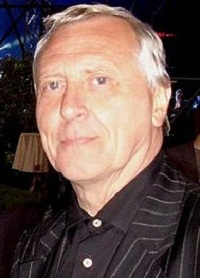 Peter Greenaway
Peter Greenaway
1942-
Peter Greenaway (born 5 April 1942) is a British film director. His films are noted for the distinct influence of Renaissance and Baroque painting, and Flemish painting in particular.
Greenaway was born in Newport, Monmouthshire, Wales, to a teacher mother and a builder’s merchant father. Greenaway’s family settled in Essex, England. He attended Forest School in North-East London.
In 1962, Greenaway began studies at Walthamstow College of Art. Greenaway trained as a muralist for three years; he made his first film, Death of Sentiment, a churchyard furniture essay filmed in four large London cemeteries. In 1965, he joined the Central Office of Information (COI), working there 15 years as a film editor and director. In that time he created a filmography of experimental films, starting with Train (1966) and Tree (1966). By the 1970s, he made Vertical Features Remake and A Walk through H.
In 1980, Greenaway directed The Falls, his first feature-length film. In the 1980s, Greenaway’s cinema flowered in his best-known films, The Draughtsman’s Contract (1982), A Zed & Two Noughts (1985), The Belly of an Architect (1987), Drowning by Numbers (1988) and his most successful (and controversial) film, The Cook, the Thief, His Wife, Her Lover (1989).
In 1989, he collaborated with artist Tom Phillips on a television serial, A TV Dante, dramatizing the first few cantos of Dante’s Inferno. In the 1990s, he presented the visually spectacular Prospero’s Books (1991), the controversial The Baby of Macon (1993), The Pillow Book (1996) and 8½ Women (1999).
He is currently professor of cinema studies at the European Graduate School in Saas-Fee, Switzerland.
Source: http://en.wikipedia.org/wiki/Peter_Greenaway
 Bibliography
Bibliography
Press your browser’s BACK button to return to the previous page.
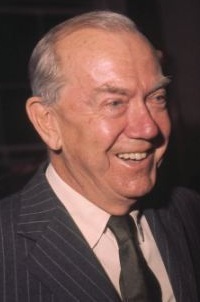 Graham Greene
Graham Greene
1904-1991
Henry Graham Greene (October 2, 1904-3 April 1991) was an English author, playwright and literary critic. His works explore the ambivalent moral and political issues of the modern world.
Greene was born in 1904 in St. John’s House, a boarding house of Berkhamsted School on Chesham Road in Berkhamsted, Hertfordshire, England, where his father was housemaster. In 1925, while an undergraduate at Balliol College, Oxford, his first work, a poorly received volume of poetry entitled Babbling April, was published.
After graduating with a second-class degree in history, he worked for a period of time as a private tutor and then turned to journalism – first on The Nottingham Journal and then as a sub-editor on The Times. His first published novel was The Man Within (1929). Favorable reception emboldened him to quit his sub-editor job at The Times and work as a full-time novelist. The next two books, The Name of Action (1930) and Rumor at Nightfall (1932), were unsuccessful; and he later disowned them. His first true success was Stamboul Train (1932).
Greene also wrote short stories and plays, which were well-received, although he was always first and foremost a novelist. He received the 1948 James Tait Black Memorial Prize for “The Heart of the Matter.” In 1986, he was awarded Britain’s Order of Merit.
Although Greene objected strongly to being described as a Roman Catholic novelist rather than as a novelist who happened to be Catholic, Catholic religious themes are at the root of much of his writing, especially the four major Catholic novels: Brighton Rock, The Power and the Glory, The Heart of the Matter and The End of the Affair. Several works such as The Confidential Agent, The Third Man, The Quiet American, Our Man in Havana and The Human Factor also show an avid interest in the workings of international politics and espionage.
Greene suffered from bipolar disorder, which had a profound effect on his writing and personal life.
He died at age 86 of leukemia in 1991
Source: http://en.wikipedia.org/wiki/Graham_Greene
 Bibliography
Bibliography
Press your browser’s BACK button to return to the previous page.
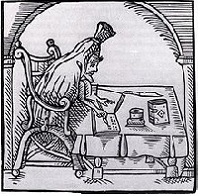 Robert Greene
Robert Greene
1558-1592
Robert Greene (July 11, 1558-September 3, 1592) was an English author best known for a posthumous pamphlet attributed to him, “Greene’s Groats-Worth of Wit,” widely believed to contain a polemic attack on William Shakespeare.
Greene was born in Norwich in 1558; however, biographers disagree whether Greene was the son of a humble saddler or of a more prosperous innkeeper with landowning relatives. He took his B.A. in 1580 and his M.A. in 1583 at St. John’s College, Cambridge, and became an M.A. of Oxford in 1588. Greene claimed to have married a well-off woman named Doll and to have later abandoned her after spending a considerable sum of her money.
In London, Greene managed to support himself through his own writing, arguably becoming the first professional author in England. Greene published in many genres, including autobiography, plays and romances. He lived as a notorious intellectual and rascal, cultivating this reputation himself in pamphlets describing his adventures amid the seamier characters of Elizabethan England, and through a memorable appearance, with fashionable clothing and his pointed red beard.
He died on September 3, 1592, from what Nashe called a “banquet of Rhenish wine and pickled herring,” perhaps having written on his death bed the famous “Groatsworth of Wit Bought with a Million of Repentance” and having dispatched a letter to his wife asking her to forgive him and to settle his debts.
Source: http://en.wikipedia.org/wiki/Robert_Greene_%28dramatist%29
 Bibliography
Bibliography
Press your browser’s BACK button to return to the previous page.
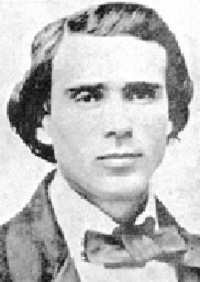 Josiah Gregg
Josiah Gregg
1806-1950
Josiah Gregg (July 19, 1806-February 25, 1850) was a merchant, explorer, naturalist and author of the American Southwest and Northern Mexico regions. He is most famous for his book, Commerce of the Prairies.
Gregg was born in Overton Country, Tennessee. When he was six years old, his family moved to Missouri. Gregg had training in both law and medicine and practiced both with distinction before he retired from urban life due to deteriorating tuberculosis.
In 1831, he joined a caravan for Santa Fe, on a new trail from Van Buren, Arkansas. Gregg then settled in New Mexico Territory, starting work as a bookkeeper. He made a tour of Indian Territories (also known as the Oklahoma Territory).
Gregg’s book, Commerce of the Prairies, published in two volumes in 1844, was an account of his time spent as a trader on the Santa Fe Trail from 1831 to 1840 before the Mexican-American War. This included extensive descriptions of the geography, botany, geology and culture of New Mexico. Gregg wrote of some locals, such as Maria Gertrudis Barcelo, a Santa Fe saloon owner.
The book established Gregg’s literary reputation and he was hired as a news correspondent and interpreter during the Mexican-American War. In this capacity, he traveled through Chihuahua.
Gregg corresponded with George Engelmann in St. Louis, Missouri, sending him collections of plants, many of which were previously unknown. Several Southwestern plants bear the species patronym “greggii” to honor Gregg’s contributions.
After the war, in 1849, Gregg participated in the California Gold Rush. He died from starvation and exposure on February 25, 1850, while leading an emergency winter expedition out of a snow-bound mining camp. The expedition has been credited with the rediscovery of Humboldt Bay, which resulted in its settlement.
Source: http://en.wikipedia.org/wiki/Josiah_Gregg
 Bibliography
Bibliography
Press your browser’s BACK button to return to the previous page.
 Kate Grenville
Kate Grenville
1950-
Kate Grenville (born October 14, 1950) is one of Australia’s best-known authors. She’s published nine novels, a collection of short stories and four books about the writing process. She has worked as an editor of documentary films at Film Australia, a sub-editor of subtitles at SBS Television and a teacher of Creative Writing.
In 2006, she was awarded a Doctorate of Creative Arts by the University of Technology, Sydney, under the supervision of Associate Professors Glenda Adams and Paula Hamilton. In 2010, she was awarded an Honorary Doctorate of Letters from the University of New South Wales.
Grenville’s reputation as a short story writer was made by the publication in 1984 of her collection, Bearded Ladies. Lilian’s Story was her first published novel (1985) and won the Australian/Vogel Literary Award. Dreamhouse followed in 1986. Joan Makes History was published in 1988. In 1994, Grenville returned to the characters and setting of Lilian’s Story with a companion novel, Dark Places.
The Idea of Perfection appeared in 2000 and won the Orange Prize for Fiction, at the time Britain’s richest literary award. In 2006, The Secret River was published. Searching for the Secret River (2006) is a memoir about the research and writing of the novel. The Lieutenant (2008) is set 30 years earlier than The Secret River. Sarah Thornhill (2011) is the sequel to The Secret River.
Grenville has also written or co-written several books about the writing process that are widely used in Creative Writing workshops and in schools and universities: The Writing Book; Writing from Start to Finish; and Making Stories (co-written with Sue Woolfe).
Grenville lives in Sydney with her husband, son and daughter.
Source: http://en.wikipedia.org/wiki/Kate_Grenville
 Bibliography
Bibliography
Press your browser’s BACK button to return to the previous page.
 Fulke Greville (Lord Brooke)
Fulke Greville (Lord Brooke)
1554-1628
Fulke Greville was born on October 3, 1554, in Beauchamp Court, Warwickshire, to a wealthy noble family, as the only son of Sir Fulke Greville. He entered Shrewsbury School in the same year as Sir Philip Sidney, who was to become his close friend. After leaving Jesus College, Cambridge, he was offered a post by Sir Henry Sidney, Philip Sidney’s father, but he gave it up in order to follow Sidney to the court of Queen Elizabeth I. At court, Greville fared well. He became part of the Areopagus club with Spenser and Sidney and also counted among his friends Sir Edward Dyer, Samuel Daniel and Sir Francis Bacon.
Like many of their contemporaries, young courtiers yearning for adventure and eager to prove themselves in battle, Greville and Sidney tried to join Sir Francis Drake in his sail to capture Spanish cities in the West Indies in 1585. Queen Elizabeth expressly forbade Drake to take them along. In 1586, the Queen also refused Greville permission to join the Earl of Leicester in his campaign in the Netherlands. Sidney, however, was allowed to go; a decision all of England learned to regret, when he was killed by a musket shot at the battle of Zutphen in October 1586.
Greville represented Warwickshire in Parliament for four terms and had a distinguished career under both Queen Elizabeth I and King James I. He was Secretary to the Principality of Wales for 45 years, was knighted by Elizabeth in 1597, served as Treasurer of the Navy (1589-1604) and was Chancellor of the Exchequer (1614-22). In 1621, King James created Greville Baron Brooke, a title that had been in the family of his paternal grandmother. Greville was endowed with Knowle Park and Warwick Castle, in the restoration of which, it is said, he spent more than £20,000.
Greville was murdered by a servant, who believed he had been cheated in Greville’s will, on September 30, 1628. After stabbing Greville, the murderer, Ralph Heywood, turned the knife on himself.
All of Greville’s works were published posthumously, save for a few verses in anthologies and the 1609 publishing of part of Mustapha. Greville’s works were published in folio in Certain Learned and Elegant Works (1633). This included the sonnet cycle, “Caelica,” composed of love poems as well as verses on religious and philosophical themes, and the two tragedies, Alaham and Mustapha. A third play, about Antony and Cleopatra, Greville had destroyed. In 1633, “A Treatie of Humane Learning,” a philosophical verse treatise on knowledge, was published. Greville’s most famous work, The Life of the Renowned Sir Philip Sidney, probably written between 1610 and 1614, was not published until 1652.
Source: http://www.luminarium.org/renlit/fulkebio.htm
 Bibliography
Bibliography
Press your browser’s BACK button to return to the previous page.
 Zane Grey
Zane Grey
1872-1939
Pearl Zane Gray (who would later drop his first name and change the spelling of his last name) was born on January 31, 1872, in Zanesville, a town founded by his maternal ancestor, Ebenezer Zane (1747-1811). It is located in Muskingum County, where the rivers Licking and Muskingum meet in the Ohio Valley. In the early 1800s, the frontier road named Zane’s Trace and the river ferry service brought many travelers and settlers to the area, which quickly grew as a thriving community of craftsmen; mills and potteries were included among its businesses. River life would have a profound effect on Grey’s future.
He was the third child born to Alice Josephine and Lewis M. Gray, M.D., a dentist. He developed a love of physical pursuits as a young man and during his lifetime he was an avid horseback rider, hunter, fisherman and baseball player, which earned him a scholarship to the University of Pennsylvania.
Graduating with a degree in dentistry in 1898, Grey established a dental clinic in New York City. He also played minor league baseball for a time, which inspired a number of stories and novels, including The Young Pitcher (1911) and The Redheaded Outfield and Other Baseball Stories (1920). With a love of the great outdoors entrenched in his character from childhood, Grey often ventured out of the city with his brothers. Lackawaxen Township in the neighboring state of Pennsylvania was a frequent canoeing and fishing destination – it was there at a boarding house that Grey met his future wife. On November 21, 1905, Grey married Lina Elise “Dolly” Roth (1883-1957), with whom he would have three children. He and Lina honeymooned in California, then settled in a farmhouse in Lackawaxen.
Around this time, Grey started to write about his hobbies; his first of many published stories and articles about fishing, “A Day on the Delaware,” appeared in 1902 in Recreation magazine. During his lifetime, Grey wandered far and wide; his first big adventure was to the Grand Canyon with Colonel Charles Jesse “Buffalo” Jones (1844-1919). He often travelled west to his hunting lodge in Arizona and stayed at the Long Key Fishing Camp in Florida in the winter to immerse himself in the world of big-game fishing, of which he achieved many records.
After closing his dental practice, Grey was able to devote much time to writing novels, articles and short stories based on his adventures. Lina tolerated his long absences – she was a hearty supporter of his writing career, assisted in business matters and helped edit his manuscripts. Although Grey initially met much rejection from publishers, he self-published his first novel, Betty Zane (1903), which is based on the lives of his illustrious ancestors.
Its sequel, Spirit of the Border (1906), was followed by his Grand Canyon-inspired novel, The Last of the Plainsmen (1908). The Last Trail (1909) and his bestseller, The Heritage of the Desert (1910), followed. However, it was Riders of the Purple Sage (1912) that won Grey wide acclaim and became his best-known novel. The sequel to it, The Rainbow Trail, appeared in 1915. Three years later, the Greys moved to California, where he established the Zane Grey Productions film company. Although it was soon bought by a company that would become Paramount Pictures, dozens of Grey’s novels and stories were filmed for television and the big screen.
After buying the sailboat, Fisherman, in 1924, Grey set off on many high-seas fishing adventures in the waters surrounding Fiji, the Galapagos Islands, the Florida Keys, Catalina Island (where he also maintained a residence), Tahiti, Nova Scotia, Australia and New Zealand. The Great Depression had little effect on Grey’s career; he wrote prolifically up to the year of his death and has had many posthumous works published.
Grey died on October 23, 1939, at home in Altadena, California, and was buried in the Union Cemetery of Lackawaxen, Pike County, Pennsylvania, with Dolly beside him.
Source: http://www.online-literature.com/zane-grey/
 Bibliography
Bibliography
Press your browser’s BACK button to return to the previous page.
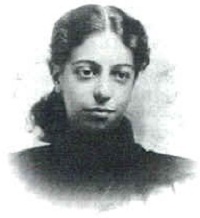 Angelina Weld Grimke
Angelina Weld Grimke
1880-1958
Angelina Weld Grimke (February 27, 1880-June 10, 1958) was an African-American journalist, teacher, playwright and poet who was part of the Harlem Renaissance and was one of the first African-American women to have a play performed.
She was born in Boston, Massachusetts, in 1880 to a biracial family whose ancestors included slaveholders, abolitionists, European-American slaves and Midwesterners. Her father, Archibald Grimke, was a lawyer, the second black to have graduated from Harvard Law School. He was appointed consul to the Dominican Republic from 1894-1898. Her mother, Sarah Stanley, was a white woman from a Midwestern middle-class family about which information is scarce.
Grimke’s parents met in Boston. Archibald Grimke had established a law practice there after completing law school. He and Sarah Stanley married but faced much opposition from her family, due to concerns over race. The marriage did not last. Not too long after Angelina’s birth, Sarah left the family and took Angelina with her to the Midwest. After Sarah began a career of her own, she sent Angelina, then seven, back to Massachusetts to live with her father.
Grimke’s great aunts were the famous abolitionists, Sarah and Angelina Grimke. Her paternal grandfather was their brother, Henry Grimke, head of a slaveholding family based in Charleston, South Carolina. Her paternal grandmother was Nancy Weston, an enslaved woman of European and African descent, with whom Henry became involved after becoming a widower.
Angelina Grimke attended the Boston Normal School of Gymnastics (now Wellesley College). After graduating, she moved to Washington, D.C., with her father. In 1902, she began teaching English at Armstrong Manual Training school. She left this position in 1916 to teach at the legendary Dunbar High School.
Grimke wrote essays, short stories and poems that were published in The Crisis, Opportunity, The New Negro, Caroling Dusk and Negro Poets and Their Poems. Some of her more famous poems include, “The Eyes of My Regret,” “At April” and “Trees.”
Grimke also wrote a play, Rachel, one of the first plays to protest lynching and racial violence. She wrote the three-act drama for the National Association for the Advancement of Colored People (NAACP) to rally public support against the recently released film, The Birth of a Nation. The play was produced in 1916 in Washington, D.C., and performed by an all-black cast. It was published in 1920.
After her father died, Grimke left Washington, D.C., for New York, where she lived a reclusive life in Brooklyn. She died in 1958.
Source: http://en.wikipedia.org/wiki/Angelina_Weld_Grimk%C3%A9
 Bibliography
Bibliography
Press your browser’s BACK button to return to the previous page.
 Sarah and Angelina Grimke
Sarah and Angelina Grimke
1792-1873/1805-1879
Sarah Moore (1792-1873) and Angelina Emily (1805-1879) Grimke were antislavery leaders and early agitators for women’s rights.
Sarah Grimke was born on Nov. 29, 1792, and Angelina Grimke was born on Feb. 20, 1805; their father was a distinguished South Carolina jurist. Partly through the influence of their older brother, Thomas, who was prominent in temperance and pacifist reforms, and partly from their own religious beliefs, the sisters early opposed slavery, although the family owned several slaves.
On a trip to Philadelphia in 1819, Sarah was converted to Quakerism and, later, so was Angelina Grimke. They settled in Philadelphia in the 1820s. The Quakers’ passivity failed to satisfy energetic Angelina. After reading William Lloyd Garrison’s abolitionist newspaper, The Liberator, she wrote to him and then wrote a pamphlet, which the abolitionist press eagerly published. Her “An Appeal to the Christian Women of the South” (1836) urged her Southern sisters to “overthrow this horrible system of oppression and cruelty, licentiousness and wrong.” That this was written by a Southern woman made it unusually valuable to the antislavery cause and aroused such disapproval in South Carolina that authorities threatened to prosecute Angelina if she returned.
Sarah Grimke, shyer than her sister, wrote “An Epistle to the Clergy of the Southern States” (1836), urging churches to oppose slavery on religious grounds. The sisters freed the slaves they had inherited and offered their services to the Northern abolitionists. “As I left my native state,” wrote Angelina, “to escape the sound of the driver’s lash and the shrieks of tortured victims, I would gladly bury in oblivion the recollections of those scenes. But it may not, it cannot be.”
The Grimke sisters were highly effective in speaking to and organizing women. The American Antislavery Society appointed them lecturers (after much discussion of the propriety of sponsoring women to speak in public) and, in 1836-1837, “Carolina’s high-souled daughters,” as John Greenleaf Whittier named them, toured New York and New England. The prevailing prejudice against women appearing publicly before “promiscuous assemblies,” however, led to many objections and brought up the question of women’s rights. Sarah’s “Letters on the Equality of the Sexes” (1838) and Angelina’s “Appeal to the Women of the Nominally Free States” (1837) firmly linked the rights of slaves to the rights of women and helped introduce the divisive “woman question” into the abolitionist movement. Garrison urged them to continue speaking but Theodore Weld counseled Angelina not to “push your women’s rights until human rights have gone ahead.”
After Weld and Angelina Grimke were married on May 14, 1838 (they had one son, Charles Stuart), the sisters spent most of their time assisting Weld with his writing and his political work in Washington. When Weld, in poor health, retired from the abolitionist movement in 1843, Sarah accompanied the couple to New York and later helped conduct Weld’s interracial school in New Jersey. Sarah died on December 23, 1873, and Angelina on October 26, 1879.
Source: http://www.answers.com/topic/sarah-moore-and-angelina-emily-grimk
 Bibliography
Bibliography
Press your browser’s BACK button to return to the previous page.
 The Brothers Grimm (Jacob and Wilhelm)
The Brothers Grimm (Jacob and Wilhelm)
1785-1863/1786-1859
The Brothers Grimm, Jacob Grimm (January 4, 1785-September 20, 1863) and Wilhelm Grimm (February 24, 1786-December 16, 1859), were German academics, linguists, cultural researchers and authors who collected folklore and published several collections of it as Grimm’s Fairy Tales, which became very popular.
The first collection of fairy tales, Children’s and Household Tales (Kinder-und Hausmarchen), was published in 1812 with more than 200 fairy tales. Many of the stories had already been written by Charles Perrault in the late 1600s.
The brothers Grimm were born in the Wolfgang section of Hanau, Germany, near Frankfurt in Hessen. Both were educated at the Friedrichs-Gymnasium in Kassel and later studied law at the University of Marburg.
In 1812, they published their first volume of fairy tales, Tales of Children and the Home. They had collected the stories from peasants and villagers. Between 1816 and 1818, they published two volumes of German legends and a volume of early literary history.
The brothers became interested in older languages and their relation to German. Jacob began to specialize in the history and structure of the Germanic languages, devising a theory that became known as Grimm’s Law, based on immense amounts of data.
In 1831, they spent time in writing a definitive dictionary, the German Dictionary: Deutsches Worterbuch, the first volume being published in 1854. The work was carried on by future generations. Around 1832, the first volume of Jacob Grimm’s German Mythology (Vol. 2: 1844, Volume 3: 1854) was published.
Between then and 1837, Jacob published two more volumes of German Grammar. The two brothers then dealt with animal fables and, in 1834, Jacob Grimm finalized a work he began in 1811, Reinhart (Reineke) Fox, which was the first publication of this traditional animal epic and the first coherent documentation of its vernacular versions. Subsequently, in 1835, he published his work, German Mythology. The third edition of the Children’s and Household Tales was written in 1837 by Wilhelm alone. In 1838, Jacob and Wilhelm Grimm began their joint work on the German dictionary.
The brothers died while still working on the dictionary: Wilhelm died in December 1859, having completed the letter D; Jacob survived his brother by nearly four years, completing the letters A, B, C and E, and was working on Frucht (fruit) when he collapsed at his desk.
Source: http://en.wikipedia.org/wiki/Brothers_Grimm
 Bibliography
Bibliography
Press your browser’s BACK button to return to the previous page.
 Robert Grosseteste
Robert Grosseteste
c. 1170-1253
Robert Grosseteste (c. 1175-October 9, 1253) was an English statesman, scholastic philosopher, theologian and Bishop of Lincoln. He was born of humble parents at Stradbroke in Suffolk.
There is very little direct evidence about Grosseteste’s education. He may have received training in the Liberal Arts at Hereford, in light of his connection to the Bishop of Hereford in the 1190s and a recommendation from Giraldus Cambrensis. It is fairly certain that Grosseteste was a master by 1192, but whether that indicated he completed a course of studies is unclear. Grosseteste acquired a position in the bishop’s household but, at the death of this patron, he disappeared from the historical record. He appears again in the early 13th century as a judge-delegate in Hereford, but there are no specific details of where he resided or whether he had continued to study.
By 1225, he had gained the benefice of Abbotsley in the diocese of Lincoln, by which time he was a deacon. On this period in his life scholarship is divided. Some historians argue that he began his teaching career in theology at Oxford in this year, whereas others have more recently argued that he used the income of this ecclesiastical post to support study in theology at the University of Paris. However, there is clear evidence that by 1229/30 he was teaching at Oxford, though on the periphery as the lector in theology to the Franciscans, who had established a convent in Oxford about 1224. He remained at this post until March 1235.
As a master of the sacred page (manuscripts of theology in the Latin), Grosseteste trained the Franciscans in the standard curriculum of university theology. He collected some of those sermons, along with some short notes and reflections, not long after he left Oxford; this is now known as his Dicta.
Grosseteste was consecrated bishop of Lincoln in June 1235. In ecclesiastical politics, the bishop belonged to the school of Becket. His zeal for reform led him to advance, on behalf of the courts, Christian pretensions that were impossible for the secular power to admit.
The last years of Grosseteste’s life and episcopacy were embroiled in a conflict with the new Archbishop of Canterbury, Boniface of Savoy. In 1250, he travelled to the papal court, where one of the cardinals read his complaints at an audience with Innocent IV. Not only did he claim that Boniface was threatening the health of the church, the pope was just as guilty for not reining him in and that this was symptomatic of the current malaise of the entire church. Most observers noted the personal animus between the bishop of Lincoln and the pope, but it did not stop the pope from agreeing to most of Grosseteste’s demands about the way the English church ought to function.
Grosseteste died on October 9, 1253. He must then have been between 70 and 80 years of age. He is buried in a tomb within his memorial chapel in Lincoln Cathedral.
Source: http://en.wikipedia.org/wiki/Robert_Grosseteste
 Bibliography
Bibliography
Press your browser’s BACK button to return to the previous page.
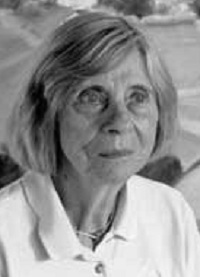 Barbara Guest
Barbara Guest
1920-2006
Born in 1920 in North Carolina, Barbara Guest spent her childhood in Florida and California, and evidence of these varied places is revealed in her poetry. After graduating from the University of California at Berkeley, Guest settled in New York City, where she became connected with the equally emerging poets and Abstract-Expressionist artists of the New York School, who were in turn to influence her poetry. For several years, she reviewed art for Art News and continued to write about painting in that magazine and in Art and America. Painting and its allied arts have remained a constant in her poetry, particularly through her continuing collaborations with artists. She died on February 15, 2006, in Berkeley, where she lived, with her daughter Hadley, during the final years of her life.
Her first books of poetry, including The Location of Things, Poems and The Blue Stairs, were published in the 1960s. During the 1970s, books such as Moscow Mansions, The Countess from Minneapolis and, in particular, a novel, Seeking Air, pointed to a sense of structure moving in more varied and experimental directions. This was true of her acclaimed biography of the poet H.D., Herself Defined, and especially true of a major poem, “The Turler Losses,” and Biography, a book of poetry published in 1980. Fair Realism (1989) was followed within a year by Musicality, a collaboration with artist June Felter, and Defensive Rapture (1990), of which a critic observed that Guest was now “pushing the reader into the spiritual and metaphysical possibilities of language itself.”
Guest continued to publish prolifically during the 1990s and her work has been recognized by major awards and honors. A festschrift was held at Brown University in her honor in 1993 and, for two consecutive years (1995 and 1996), she received America Awards for literature from the Contemporary Arts Council for her Selected Poems and for Quill, Solitary Apparition. Fair Realism was awarded the Lawrence Lipton Prize; and Defensive Rapture received the San Francisco State University Poetry Award. In 1999, she was awarded the Frost Medal for Lifetime Achievement by the Poetry Society of America.
Source: http://epc.buffalo.edu/authors/guest/bio.html
 Bibliography
Bibliography
Press your browser’s BACK button to return to the previous page.
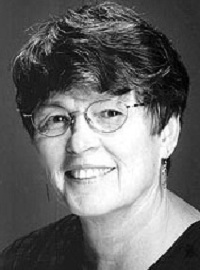 Judith Guest
Judith Guest
1936-
Judith Guest (born March 29, 1936) is an American novelist and screenwriter. She was born in Detroit, Michigan, and is the great-niece of Poet Laureate Edgar Guest (1881-1959).
Guest attended Detroit’s Mumford High School in 1951. When her family moved to Royal Oak, she transferred to Dondero High School, where she graduated in 1954. Guest then studied English and psychology at the University of Michigan, graduated with a B.A. in education and was a member of Sigma Kappa sorority. She taught at a public school for several years before making the decision to devote herself full-time to completing a novel.
Guest’s first book, Ordinary People, published in 1976, was made into a 1980 film of the same name and won the Academy Award for Best Picture. This novel and two others, Second Heaven (1982) and Errands (1997), are about adolescent children forced to deal with a crisis in their family. Guest also wrote the screenplay for the 1987 film, Rachel River.
Guest co-authored the mystery, Killing Time in St. Cloud (1988), with fellow novelist Rebecca Hill. Guest’s next book, The Tarnished Eye (2004), is loosely based on a real unsolved crime in her native Michigan.
Source: http://en.wikipedia.org/wiki/Judith_Guest
 Bibliography
Bibliography
Press your browser’s BACK button to return to the previous page.
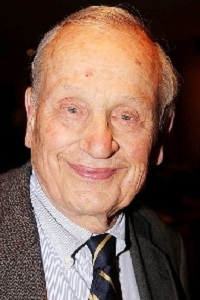 A.R. Gurney
A.R. Gurney
1930-2017
A.R. Gurney (November 1, 1930-June 13, 2017) was an American playwright and novelist. He was known for works including Love Letters, The Cocktail Hour and The Dining Room. Gurney lived in both New York and Connecticut.
Born born Albert Ramsdell Gurney Jr. in Buffalo, New York, Gurney, a graduate of St. Paul’s School (Concord, New Hampshire), attended Williams College and the Yale School of Drama, after which he began teaching Humanities at MIT. He began writing plays, such as Scenes from American Life, Children and The Middle Ages while at MIT, but it was his great success with The Dining Room that allowed him to write full-time. After The Dining Room, Gurney wrote a number of plays, most of them concerning WASPs of the American Northeast. While at Yale, Gurney also wrote the musical, Love in Buffalo. This was the first musical ever produced at the Yale School of Drama.
Gurney’s play, The Grand Manner, is about his real-life encounter with famed actress Katharine Cornell in her production of Shakespeare’s Antony and Cleopatra.
Gurney also wrote several novels, including: The Snow Ball, The Gospel according to Joe and Entertaining Strangers.
Gurney died at his home in Manhattan on June 13, 2017, at the age of 86.
Source: http://en.wikipedia.org/wiki/A._R._Gurney
 Bibliography
Bibliography
Press your browser’s BACK button to return to the previous page.
 David Guterson
David Guterson
1956-
David Guterson (born May 4, 1956) is an American novelist, short story writer, poet, journalist and essayist.
Guterson was born in Seattle, Washington. During his childhood, he attended Seattle public schools and later the University of Washington, where he earned a Bachelor of Arts degree in English literature and a Master of Fine Arts degree in creative writing. Guterson is also a Guggenheim Fellow.
Before writing professionally, Guterson worked as a teacher for 12 years. It was during his teaching career that he began to publish stories and essays in small magazines and periodicals, later selling pieces to Esquire, Sports Illustrated and Harper’s Magazine. Published in 1989, his first book, The Country Ahead of Us, the Country Behind, was a collection of short stories set mostly in the Pacific Northwest. His second book, Family Matters: Why Homeschooling Makes Sense, was published in 1992 and contained essays about family and education. His third novel was Snow Falling on Cedars, published in 1994.
Guterson’s subsequent novels include: East of the Mountains (1999), Our Lady of the Forest (2003), The Other (2008) and Ed King (2011).
Source: http://en.wikipedia.org/wiki/David_Guterson
 Bibliography
Bibliography
Press your browser’s BACK button to return to the previous page.
 Rosa Guy
Rosa Guy
1922-2012
Born Rosa Cuthbert Guy on September 1, 1922, in Trinidad, West Indies, she was an African-American writer whose fiction for young adults usually concerns family conflicts and the realities of life both in the urban American ghetto and in the West Indies.
After immigrating to the United States with her family in 1932, Guy grew up in New York City’s Harlem. During World War II, Guy was active in the American Negro Theatre. She became a writer and studied at New York University. In the late 1940s, with other young black writers, she formed the Harlem Writers’ Guild.
Her first novel, Bird at My Window (1966), is set in Harlem and deals with social forces that foster the demoralization of black men; the work also examines the relationship between the black mother and her children. Children of Longing (1970), which Guy edited, contains accounts of firsthand experiences and of the aspirations of black teens and young adults.
After publication of these works, Guy traveled in the Caribbean, living in Haiti and Trinidad. Her subsequent novels, such as The Friends (1973) and Ruby (1976), reflect West Indian and Haitian cultures. Still later works include: The Disappearance (1979), A Measure of Time (1983), New Guys around the Block (1983), Paris, Pee Wee and Big Dog (1984), My Love, My Love; or the Peasant Girl (1985, on which the successful 1990 Broadway musical, There Is an Island, was based), And I Heard a Bird Sing (1987), The Ups and Downs of Carl David III (1989), Billy the Great (1991) and The Music of Summer (1992).
The Sun, the Sea, a Touch of the Wind (1995), a novel for adults, centers on an American artist who re-examines her troubled past while living in Haiti.
Rosa Guy died of cancer on June 3, 2012 at her home on the Upper West Side of Manhattan, aged 89.
Source: http://www.biography.com/articles/Rosa-Guy-39701
 Bibliography
Bibliography